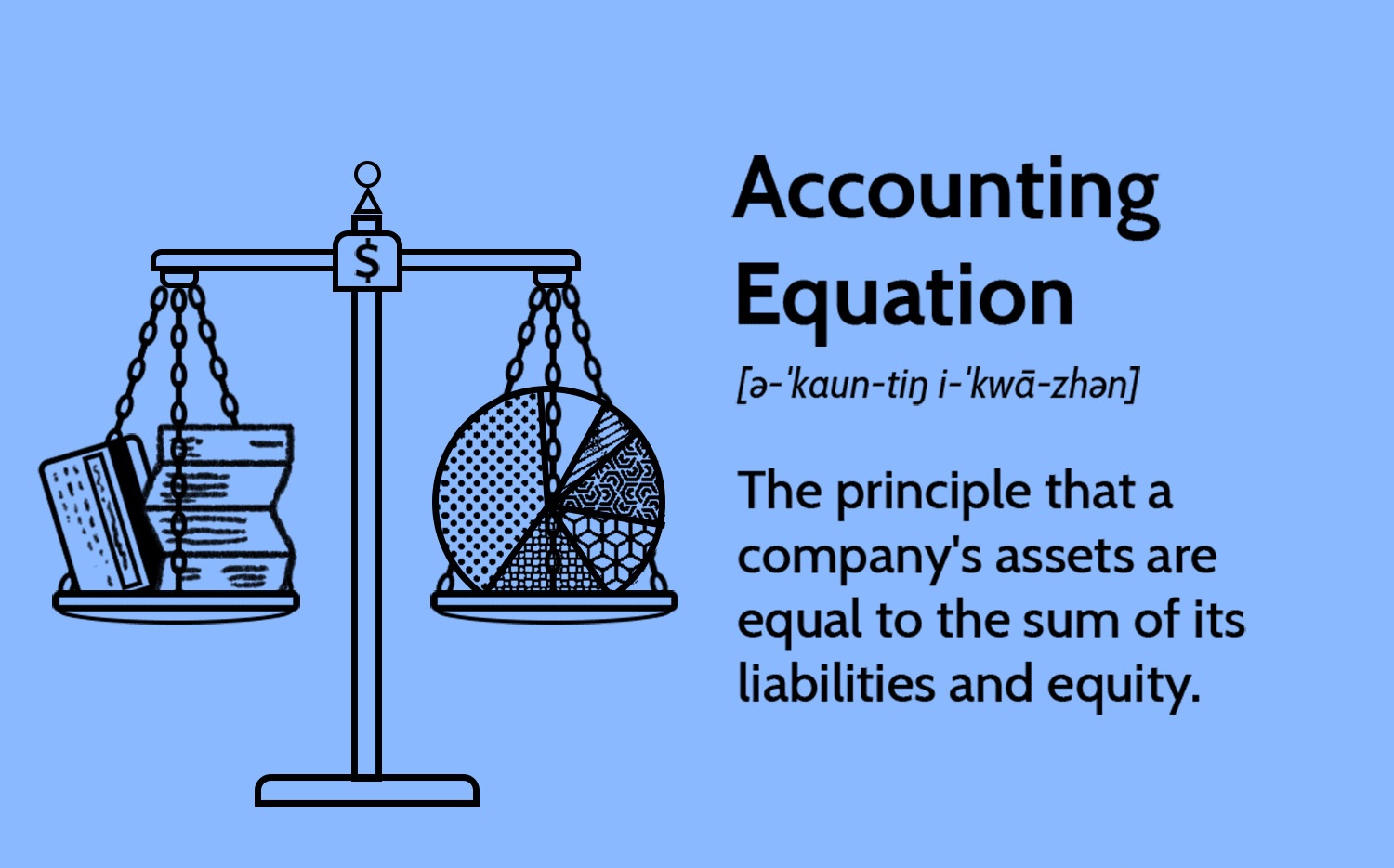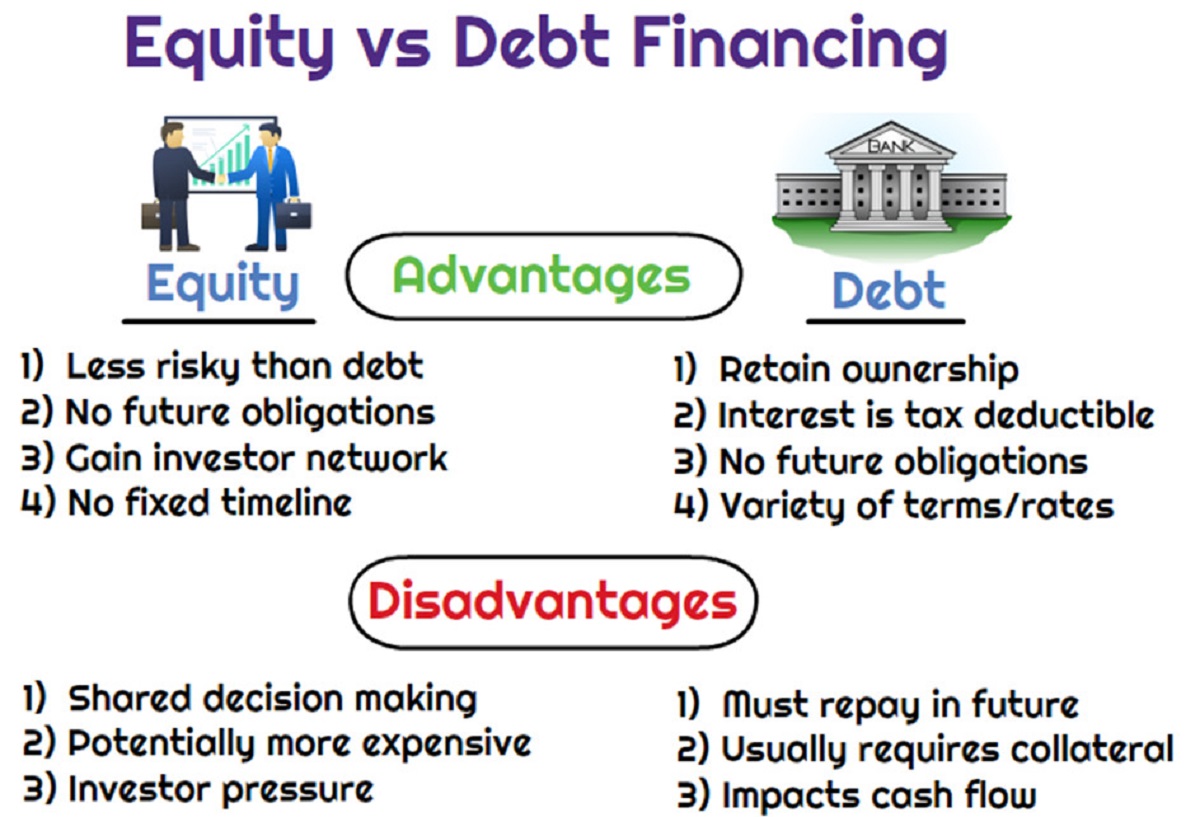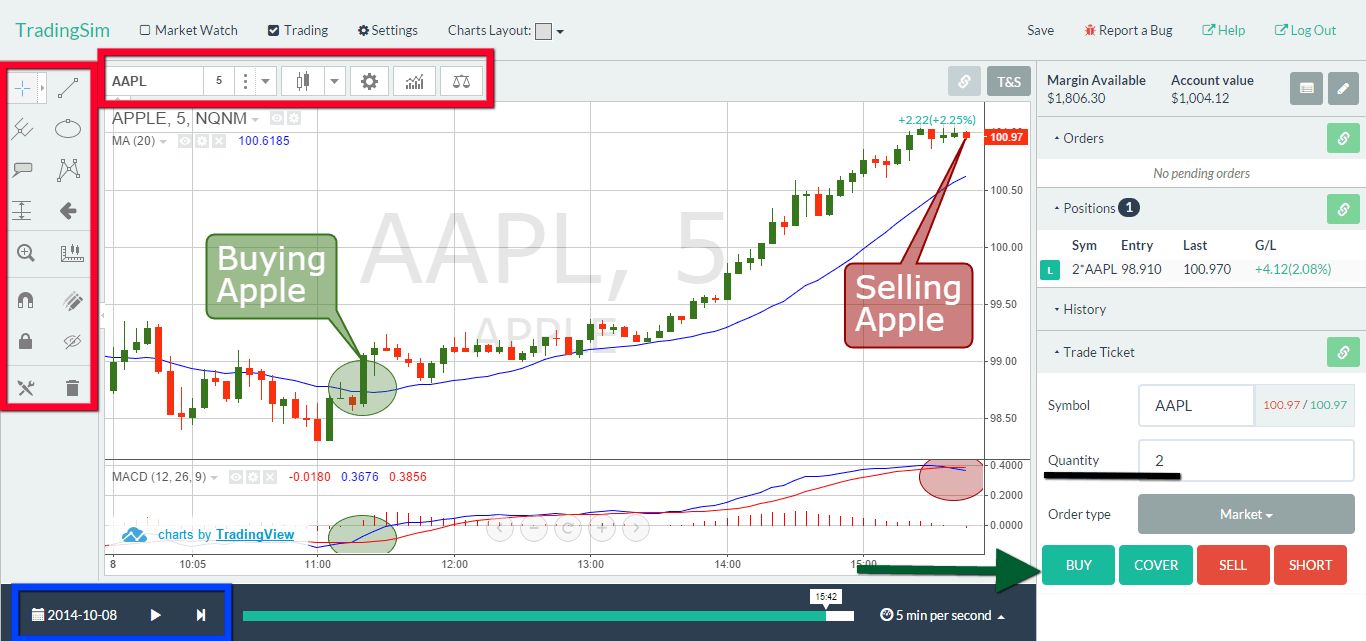Introduction
Equity investments are a popular and potentially lucrative form of investment. They allow individuals to own shares in a company, giving them a stake in its profits and losses.
When it comes to building wealth, many investors turn to equity investments as a means to grow their financial portfolio. Unlike other forms of investment, such as bonds or commodities, equity investments provide ownership in a company and allow investors to participate in its success.
Equity investments offer the potential for long-term capital appreciation, regular dividend payments, and the opportunity to have a say in the company’s decisions through voting rights. However, it’s important to note that with potential rewards, there are also risks involved.
In this article, we will explore the definition of equity investments, discuss the different types available, highlight the benefits they offer, and shed light on the potential risks. Additionally, we will provide some key factors to consider when investing in equities and how to purchase them.
Whether you are a seasoned investor or just starting, understanding equity investments is essential to making informed financial decisions and maximizing your investment potential.
Definition of Equity Investments
Equity investments, also known as stocks or shares, represent ownership in a company. When investors purchase equity, they become shareholders and have a claim on the company’s assets and earnings.
Unlike debt investments, such as bonds, where investors lend money to a company and receive fixed interest payments, equity investments provide a stake in the company’s ownership. This means that as the company grows and generates profits, the value of the investor’s equity also increases.
Equity investments are traded on public exchanges, such as the New York Stock Exchange or Nasdaq, where investors can buy and sell shares. The price of shares is determined by supply and demand, influenced by various factors such as company performance, market conditions, and investor sentiment.
Investors who own equity shares are entitled to a portion of the company’s profits, usually paid out as dividends. Dividends can be distributed on a regular basis or reinvested back into the company to fuel growth. Additionally, shareholders may also have the right to vote on matters related to the company’s governance and decision-making process.
Equity investments can be a diverse asset class, offering exposure to various sectors and industries. From established companies to startups, investors can choose to invest in large-cap, mid-cap, or small-cap stocks, depending on their risk tolerance and investment objectives.
It’s important to note that equity investments come with both potential rewards and risks. While they can provide significant returns, they are also subject to market volatility and fluctuations in share prices. Investors need to carefully analyze and assess the financial health, competitive position, and growth prospects of companies before investing in their equity.
Overall, equity investments offer individuals the opportunity to share in the growth and success of companies. By diversifying their portfolio with different equity holdings, investors can potentially achieve long-term capital appreciation and generate income through dividends.
Types of Equity Investments
Equity investments encompass a range of options, each with its own characteristics and benefits. Here are three common types of equity investments:
1. Stocks
Stocks are the most well-known and widely traded equity investment. When investors purchase stocks, they become shareholders of the company. This type of equity offers the potential for capital appreciation and dividend income.
There are different types of stocks, including common stocks and preferred stocks. Common stocks provide voting rights and the opportunity to share in the company’s profits through dividends. Preferred stocks, on the other hand, offer preference over common stockholders when it comes to dividend payments and liquidation proceeds.
2. Mutual Funds
Mutual funds pool money from multiple investors to invest in a diversified portfolio of stocks, bonds, or other securities. With mutual funds, investors can gain exposure to a variety of stocks across different sectors and industries, managed by a professional fund manager.
Mutual funds offer flexibility and convenience, as they are easy to buy and sell. They also provide the benefit of diversification, reducing the risk associated with investing in individual stocks. Investors can choose from different types of mutual funds, such as growth funds, value funds, or index funds.
3. Exchange-Traded Funds (ETFs)
ETFs are similar to mutual funds, but trade on stock exchanges like individual stocks. They offer exposure to a basket of stocks or other assets, allowing investors to diversify their holdings. ETFs can track specific market indices, sectors, or investment strategies.
One advantage of ETFs is that they provide liquidity, meaning investors can buy or sell shares at any time during market hours. They also tend to have lower expense ratios compared to mutual funds. With ETFs, investors have the flexibility to invest in broad market indexes or specific industry sectors, depending on their investment goals.
These are just a few examples of the types of equity investments available. Other options include real estate investment trusts (REITs), private equity, and venture capital. It’s essential for investors to carefully assess their objectives, risk tolerance, and time horizon when choosing the type of equity investment that aligns with their goals.
Stocks
Stocks are a popular form of equity investment, representing ownership in a specific company. When individuals buy stocks, they become shareholders and have the potential to profit from the company’s success.
One of the key advantages of investing in stocks is the potential for capital appreciation. As a company grows and generates profits, the value of its stock typically increases. This allows investors to earn a return on their investment by selling the shares at a higher price than what they initially paid.
Moreover, stocks can provide investors with a steady income stream through dividend payments. Dividends are a portion of a company’s profits distributed to shareholders on a periodic basis. Some companies, known as dividend-paying stocks, have a consistent history of paying dividends, making them attractive to income-focused investors.
Investing in stocks grants shareholders certain rights, including voting rights and the ability to participate in major company decisions. Shareholders can vote on matters such as board of director elections, mergers and acquisitions, and changes in corporate policies. This allows investors to have a voice in the company’s governance and strategic direction.
When considering investing in stocks, it’s essential to carefully analyze and research companies before making a decision. Factors to consider include the company’s financial health, competitive position, management expertise, and industry trends. Investors should diversify their stock holdings across various companies and sectors to mitigate risk.
There are different types of stocks available in the market. Common stocks are the most widely traded and offer voting rights and the opportunity to receive dividends. Preferred stocks have a higher claim on assets and earnings compared to common stocks and typically offer fixed dividend payments.
Investors can choose to invest in large-cap, mid-cap, or small-cap stocks, depending on their risk tolerance and investment objectives. Large-cap stocks are shares of well-established companies with a large market capitalization. Mid-cap stocks represent shares of mid-sized companies, while small-cap stocks are associated with smaller companies.
To invest in stocks, individuals can open brokerage accounts and buy shares through online trading platforms or seek the assistance of a financial advisor. It’s important to have a long-term perspective when investing in stocks, as short-term market fluctuations are common, and timing the market can be challenging.
Overall, stocks provide individuals with the opportunity to participate in the growth potential of companies and potentially generate significant returns over time. However, it’s important to carefully evaluate investments, diversify holdings, and stay informed about market trends and individual company performance.
Mutual Funds
Mutual funds are investment vehicles that pool money from multiple investors to create a diversified portfolio of stocks, bonds, or other securities. Managed by professional fund managers, mutual funds offer individuals the opportunity to invest in a wide range of assets without the need for extensive market knowledge or research.
One of the primary advantages of investing in mutual funds is the benefit of diversification. By pooling money from multiple investors, mutual funds can buy a variety of stocks and bonds across different sectors and industries. This diversification helps reduce the risk associated with investing in individual securities, as losses from one investment may be offset by gains in others.
Mutual funds also offer investors the convenience of professional management. Fund managers have the expertise and resources to research, analyze, and select securities that align with the fund’s investment objectives. They monitor the portfolio, make adjustments when necessary, and provide regular updates to investors.
Another advantage of mutual funds is their accessibility. They are available to investors with varying levels of investment capital, making them an attractive option for both beginner and experienced investors. Additionally, mutual funds can be bought or sold at the end of each trading day at the net asset value (NAV), which reflects the value of the fund’s securities.
There are different types of mutual funds available to cater to various investment objectives and risk appetites. Growth funds focus on stocks with high growth potential, while value funds invest in undervalued securities. Index funds aim to replicate the performance of a specific market index, such as the S&P 500, by holding the same stocks in the same proportions as the index.
Investing in mutual funds requires individuals to carefully consider their financial goals, risk tolerance, and investment time horizon. It’s important to research and select funds that align with their investment objectives and to review the fund’s prospectus, which provides information about the fund’s investment strategy, fees, and historical performance.
When investing in mutual funds, investors should also be aware of fees and expenses associated with them. These can include management fees, administrative costs, and sales charges, known as loads. It’s crucial to understand the fee structure and evaluate the potential impact on investment returns.
To invest in mutual funds, individuals can open an account directly with a mutual fund company or through a financial advisor. They can choose to invest a lump sum or set up systematic investments through regular, automated contributions.
In summary, mutual funds provide individuals with a convenient way to diversify their investments across a broad range of stocks, bonds, or other securities. They offer professional management, accessibility, and the potential for long-term growth. However, it’s important to carefully evaluate and select funds that align with one’s investment goals and to be mindful of associated fees and expenses.
Exchange-Traded Funds (ETFs)
Exchange-Traded Funds (ETFs) are investment funds that are traded on stock exchanges, similar to individual stocks. They offer investors the opportunity to gain exposure to a diverse portfolio of assets, such as stocks, bonds, commodities, or a combination of different securities.
One of the key advantages of investing in ETFs is their simplicity and flexibility. ETFs are designed to track the performance of a specific index, sector, or asset class. They aim to replicate the returns of the underlying assets, allowing investors to gain broad market exposure with a single investment.
ETFs can be bought and sold throughout the trading day, providing investors with liquidity and the ability to adjust their portfolio quickly. The price of an ETF fluctuates throughout the day, based on supply and demand, just like individual stocks.
Another advantage of ETFs is the potential for diversification. By investing in an ETF that tracks a specific index, investors gain exposure to a basket of securities within that index. This diversification helps reduce risk and exposure to individual stocks or bonds.
ETFs also offer cost advantages compared to other investment options. They typically have lower expense ratios compared to mutual funds, as they aim to passively track an index rather than actively manage a portfolio. This cost-efficiency can contribute to higher returns for investors over the long term.
There are various types of ETFs available, each catering to different investment strategies and goals. Broad market ETFs track the performance of major indices like the S&P 500 or FTSE 100. Sector-specific ETFs focus on particular industries, such as technology, healthcare, or energy. Bond ETFs provide exposure to fixed-income securities, and commodity ETFs track the price of commodities like gold or oil.
Investing in ETFs requires individuals to carefully consider their investment objectives, risk tolerance, and time horizon. They should research the underlying assets of the ETF, understand the fund’s structure and expenses, and track its historical performance.
When investing in ETFs, investors have the option to hold them for the long term or actively trade them for short-term gains. However, it’s important to note that frequent trading of ETFs may lead to transaction costs and potential tax consequences.
To invest in ETFs, individuals can open brokerage accounts and buy shares through online trading platforms. They can also consult with financial advisors to select ETFs that align with their investment goals and objectives.
In summary, ETFs are investment funds traded on stock exchanges, designed to track specific indices, sectors, or asset classes. They offer simplicity, flexibility, potential diversification, and cost-efficiency. However, like any investment, it’s crucial for individuals to conduct thorough research, evaluate their risk tolerance, and choose the right ETFs that align with their investment strategy.
Benefits of Equity Investments
Equity investments offer numerous potential benefits for investors looking to build wealth and achieve their financial goals. Here are some key advantages of investing in equity:
Potential for Capital Appreciation
Equity investments have the potential to generate long-term capital appreciation. As companies grow and become more profitable, the value of their stocks can increase, allowing investors to earn a return on their investment. This growth potential can result in significant gains over time.
Income Generation through Dividends
Many companies distribute a portion of their profits to shareholders in the form of dividends. Dividend payments can provide a consistent income stream for investors. Dividend-paying stocks are particularly attractive to those seeking regular cash flow or looking to supplement their income.
Ownership and Voting Rights
When investors buy equity in a company, they become shareholders and have ownership rights, including the ability to participate in major company decisions. Shareholders typically have voting rights that allow them to participate in matters such as electing board members, approving mergers or acquisitions, and influencing corporate policies.
Liquidity and Market Efficiency
Equity markets are generally highly liquid, meaning investors can easily buy and sell stocks. The ability to sell shares quickly enables investors to convert their equity investments into cash when needed. Moreover, the efficiency of equity markets ensures that stock prices generally reflect the value and expectations of market participants.
Portfolio Diversification
Equity investments allow investors to diversify their portfolios by investing in different companies, sectors, and geographic regions. Diversification helps reduce risk by spreading investments across a variety of assets, potentially minimizing the impact of poor performance in a single investment.
Inflation Hedge
Equity investments have historically been considered an effective hedge against inflation. As companies increase their prices and earnings over time to keep up with inflation, the value of equity investments can also rise, helping investors maintain purchasing power.
Accessibility and Flexibility
Equity investments are accessible to a wide range of investors, from individual retail investors to institutional investors. With online trading platforms and brokerage accounts, investors can easily buy and sell stocks, monitor their investment portfolios, and track market trends at their convenience.
Potential for Long-Term Growth
Equity investments have the potential to deliver sturdy long-term growth. Historically, stock markets have shown a positive upward trend over the long term, allowing patient investors to benefit from the cumulative growth of their equity investments.
It’s important to note that investing in equities involves risks, including market volatility, the potential for loss of capital, and individual company risk. Therefore, it is crucial for investors to conduct thorough research, analyze their risk tolerance, and seek professional advice when making investment decisions.
Potential Risks of Equity Investments
While equity investments offer potential rewards, they also come with inherent risks. Understanding and managing these risks is crucial for investors. Here are some potential risks associated with equity investments:
Market Volatility
Equity markets can be highly volatile, with prices fluctuating daily based on supply and demand. Market volatility can be influenced by various factors, such as economic conditions, geopolitical events, or changing investor sentiment. Fluctuations in stock prices can lead to significant short-term losses, requiring investors to have a long-term perspective.
Individual Company Risk
Investing in individual stocks exposes investors to company-specific risks. Factors such as poor management decisions, weak financial performance, or industry disruptions can negatively impact a company’s stock price. It’s crucial for investors to conduct thorough research and diversify across different companies and sectors to mitigate this risk.
Liquidity Risk
While equity markets are generally considered liquid, there can be instances where individual stocks become illiquid, meaning there is a lack of buyers or sellers in the market. Illiquid stocks can make it challenging to sell shares quickly, potentially leading to losses or delays in accessing invested capital.
Concentration Risk
Concentrating investments in a particular sector or industry can expose investors to concentration risk. Economic or regulatory changes affecting that sector can have a significant impact on the value of investments. Diversifying across different sectors and industries can help mitigate this risk.
Foreign Exchange Risk
Investing in international equity markets exposes investors to foreign exchange risk. Exchange rate fluctuations between different currencies can impact the returns of international investments. Currency movements can either enhance or erode investment returns, depending on the direction of the exchange rate changes.
Risk of Capital Loss
Equity investments carry the risk of capital loss. Stock prices can decline due to various factors, including market conditions, company-specific issues, or economic downturns. Investors need to be prepared for the possibility of losing a portion or all of their invested capital.
Political and Regulatory Risk
Political instability or adverse regulatory changes within a country or region can negatively impact equity investments. Politics, government policies, and regulations can affect business operations, profitability, and investor confidence. Investors need to be aware of geopolitical risks and consider the potential impact on their investments.
Timing Risk
Timing the market is inherently challenging. Trying to predict short-term market movements can lead to poor investment decisions or missed opportunities. Investors should focus on long-term objectives and avoid making impulsive decisions based on short-term market fluctuations.
It’s important for investors to carefully assess their risk tolerance, diversify their portfolios, and stay informed about market trends and individual company performance. Seeking guidance from financial professionals can provide valuable insights and help manage the risks associated with equity investments.
Factors to Consider when Investing in Equity
Investing in equity requires careful consideration and analysis to make informed decisions. Here are some key factors to consider when investing in equity:
Investment Goals and Time Horizon
Defining your investment goals and time horizon is crucial when investing in equity. Determine whether you are investing for short-term gains or long-term growth. Short-term investors may focus on market trends and trading opportunities, while long-term investors can benefit from the compounding effect of their investments over time.
Risk Tolerance
Understanding your risk tolerance is essential in determining the appropriate level of risk you are willing to take on. Equity investments come with inherent risk, and different investors have varying comfort levels with volatility and potential losses. Assess your risk tolerance and choose investment strategies and assets accordingly.
Company and Industry Analysis
Thoroughly researching and analyzing the companies and industries you are considering is important. Review financial statements, examine the competitive landscape, and understand the industry trends. Evaluate factors such as the company’s business model, management team, growth prospects, and competitive advantages. This analysis can help identify companies with strong potential for long-term growth.
Diversification
Diversification is a fundamental principle in investment. By spreading your investments across different sectors, industries, and geographical regions, you reduce the impact of any single investment’s performance on your overall portfolio. Diversification helps manage risk and increase the probability of positive returns, as different assets may perform differently in various market conditions.
Dividends and Income Potential
If you are seeking income from your investments, consider companies that pay consistent dividends. Dividend-paying stocks can provide a steady cash flow, particularly for income-focused investors. Evaluate the dividend history, payout ratio, and the company’s ability to sustain and grow its dividends over time.
Valuation and Price Analysis
Assessing the valuation and price of a stock is important to determine if it is undervalued or overvalued. Consider metrics such as price-to-earnings ratio (P/E ratio), price-to-sales ratio (P/S ratio), and price-to-book ratio (P/B ratio) to evaluate the relative value of a stock. Compare these metrics with industry peers and historical trends to make informed investment decisions.
Economic and Market Conditions
Understanding macroeconomic factors and overall market conditions is essential. Monitor economic indicators, interest rates, inflation rates, and geopolitical events that may affect companies and industries. Evaluate how market trends and economic conditions can impact the performance of your equity investments.
Professional Advice
Seeking professional advice from financial advisors or investment professionals can provide valuable insights and guidance. They can help develop an investment plan, assess your risk tolerance, and recommend suitable equity investments based on your goals and objectives. A professional can also provide research and analysis that may not be readily available to individual investors.
Keep in mind that investing in equity carries both potential rewards and risks. It’s important to stay informed, stay disciplined in your investment approach, and regularly review and adjust your portfolio as needed based on changing market conditions and your investment objectives.
How to Buy Equity Investments
Buying equity investments, such as stocks, requires some steps to ensure a smooth and informed investment process. Here’s a general guide on how to buy equity investments:
Step 1: Determine Your Investment Goals
Start by clearly defining your investment goals and objectives. Determine whether you are looking for long-term growth, regular income through dividends, or a combination of both. Having a clear understanding of your investment goals will help guide your decision-making process.
Step 2: Research and Analyze Companies
Conduct thorough research and analysis on companies you are interested in. Look at their financial statements, earning reports, and other relevant information. Evaluate the company’s competitive position, growth potential, and industry trends to assess its investment potential.
Step 3: Choose a Brokerage Account
Open a brokerage account to facilitate buying and selling equity investments. Consider factors such as fees, research tools, customer service, and user interface when selecting a brokerage firm. Online brokers offer convenience and accessibility, allowing you to trade shares from the comfort of your own home.
Step 4: Fund Your Account
Deposit funds into your brokerage account to have capital available for investment. Most brokerage firms offer various funding options, including bank transfers or wire transfers. Ensure that the account is properly funded, allowing you to execute trades when desired.
Step 5: Place Your Trade Order
Once your account is funded, you can place your trade order. Determine whether you want to buy stocks at the market price or set a specific price for your purchase. You can place market orders, limit orders, or stop orders, depending on your trading strategy and desired execution price.
Step 6: Monitor Your Investments
Regularly monitor your equity investments to stay informed about market trends and the performance of the companies you’ve invested in. Stay abreast of news and updates related to the industries and markets in which your investments operate. This will help you make informed decisions about buying, holding, or selling your equity investments.
Step 7: Review and Adjust Your Portfolio
Periodically review your investment portfolio and make necessary adjustments based on your investment goals, risk tolerance, and market conditions. Regularly assessing the performance and outlook of your investments allows you to optimize your portfolio and align it with your financial objectives.
Step 8: Seek Professional Advice
If you are new to investing or seeking expert guidance, consider consulting with a financial advisor. They can offer personalized advice, help clarify your investment goals, and provide insights based on their expertise and experience.
Remember that buying equity investments involves both potential rewards and risks. It’s important to conduct thorough research, diversify your portfolio, and stay informed about market conditions. By following these steps and being disciplined in your investment approach, you can make informed decisions and potentially achieve your investment goals.
Conclusion
Equity investments offer individuals the opportunity to become shareholders in companies and participate in their growth and success. Whether through stocks, mutual funds, or exchange-traded funds, equity investments provide potential for long-term capital appreciation, dividend income, and ownership rights that allow investors to have a say in major company decisions.
However, it’s important to note that equity investments also come with inherent risks, such as market volatility, company-specific risk, and the potential for capital loss. Understanding and managing these risks is crucial for investors.
When investing in equity, it’s essential to consider factors such as investment goals, risk tolerance, and time horizon. Conducting thorough research on companies and industries, diversifying portfolios, and evaluating market conditions are key elements of a sound investment strategy.
Equity investments offer numerous benefits, including the potential for capital appreciation, income generation through dividends, diversification opportunities, and the potential to hedge against inflation. They are accessible to a wide range of investors with varying levels of capital and can be bought and sold through brokerage accounts and online trading platforms.
Investors should stay informed about market trends, review their portfolios regularly, and seek professional advice when needed. Maintaining a long-term perspective, avoiding market timing, and making disciplined investment decisions based on thorough analysis can help investors navigate the ups and downs of the equity market.
Ultimately, equity investments are a powerful tool for building wealth and achieving financial goals. By understanding the potential risks and rewards, conducting research, and making informed investment decisions, individuals can harness the potential of equity investments to grow their wealth over time.

























